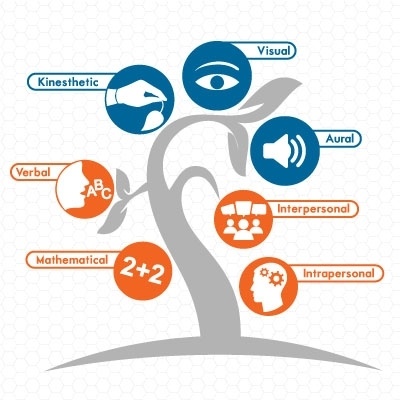The Myth of Learning Styles
What are the Main Learning Styles?
People are different. People think and feel differently about learning. They have different strengths, and they definitely learn and process what they ’ve learned differently. And everyone’s learning style is directly linked to key areas of their brain. This is the truth and it is undisputed. There are 7 main Learning Styles, but the first three are the most common and widely used:
- Visual
Where learners prefer to use pictures, images and spatial understanding - Aural
Where learners prefer acoustic stimuli - Kinesthetic
Where learners prefer to use their body, hands, gesturing and touching - Verbal
Where learners prefer speech and writing - Mathematical
Where learners prefer using logic and reasoning - Interpersonal
Where learners prefer to learn and function within groups - Intrapersonal
Where learners prefer self-study and to learn alone
Advocates of the learning style theory argue that instructors can achieve much better results when they take their student’s learning style under consideration and create a course that best fits this exact style. The adversaries of the learning style theory say that this concept is misunderstood and not scientifically proven, and they argue that learning styles do make instructors understand what motivates and cerebrally stimulates their students, but they can’t guarantee a successful outcome nor predict it. So where is the truth in that and where lies the Learning Styles myth?
What truth lies beneath?
- First of all, it’s true that people are different and that these exact differences affect the way they learn. Some have special needs. Some have special abilities. And no one can argue that intelligence comes in various levels and forms.
- Second, people have different interests and when someone is interested in a subject, chances are that he will learn about it faster and more in depth.
- Third, learners have diverse backgrounds, something that undoubtedly affects their learning.
- And, last but not least, there are people with various learning disabilities, something that ultimately affects the way they learn and that requires a special approach on behalf of the instructor.
Debunking The Myth of Learning Styles
- There is no convincing evidence to prove that when an instructor changes the presentation mode of his course to match the learning style of his students actually helps them learn.
- There is no “better” or “faster” learning as an outcome of implementing individual preferences into a course. It’s just a style that ultimately makes no difference in learning.
- Instructors should not just take under consideration the learning styles of their students, but also their background and interests.
- Content is the parameter that should directly affect the mode of presentation and not the learning style of the students.
- It’s definitely more efficient to create a course based on the motivational characteristics of the students and not their learning styles, and always be ready to adjust the learning methods and techniques and engage multiple senses rather than just one.
- Perceptual learning has to do with senses and there is nothing restrictive about that. It doesn’t prove that someone is a specific type of learner. It merely suggests that people have preferred learning styles.
- Not all learning happens the same way and nor should teaching. What’s crucial is to decide which techniques are best for which learning outcomes and not about customizing a course based on learning styles.
- We mostly think of learning styles as de facto, without questioning their true value, purpose and relevance. And the truth is that according to recent research conducted by major US universities there is no correlation between learning styles and successful learning.
Create a Course that matches your Audience's Learning Style with the Right Vendor!Find, choose and compare the top eLearning Content Development Companies!
The Myth of Learning Styles Infographic

Find more education infographics on e-Learning Infographics









